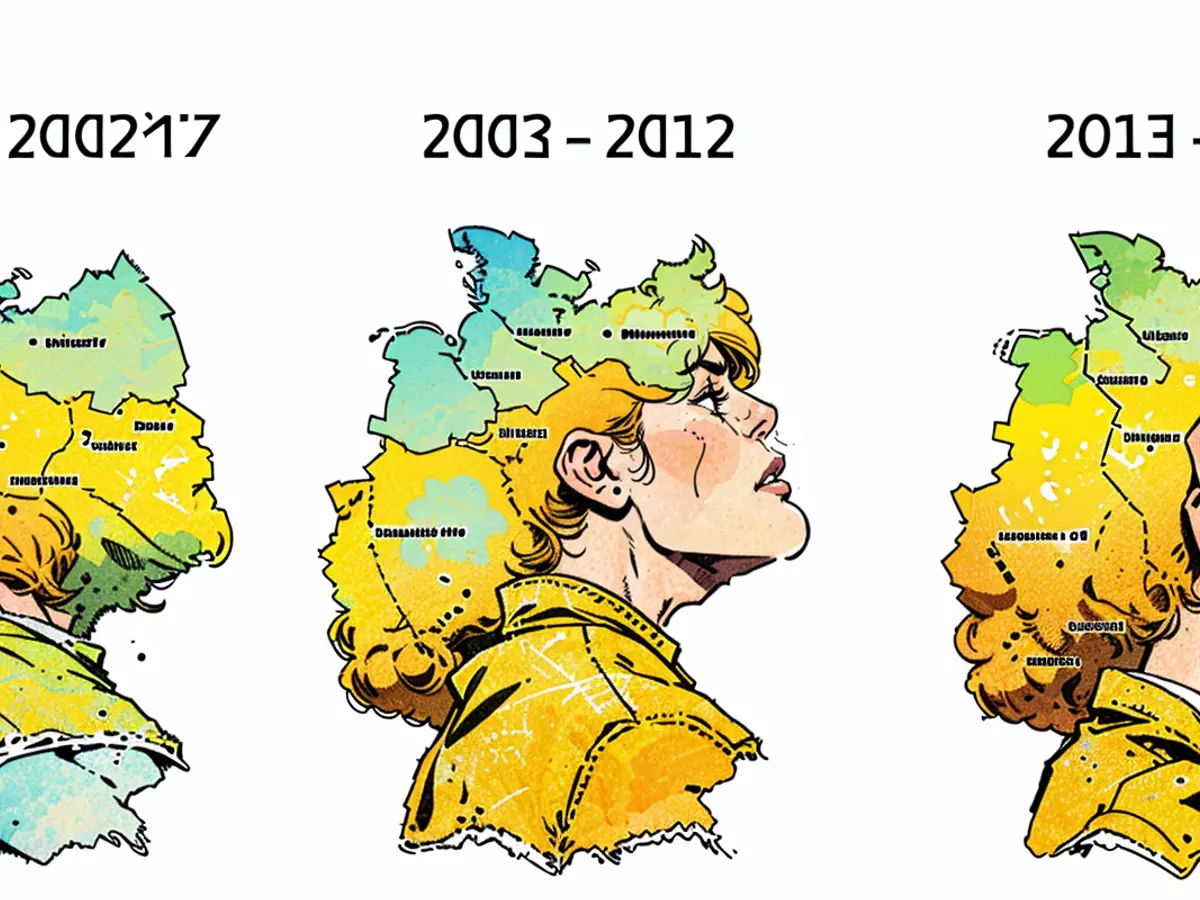Adjusting to climate change effects - (Lack of) plans for floods and heat? The federal states are opting for these preparatory measures instead.
It hasn't been long since streams turned into raging rivers, streets became muddy paths, and houses turned into ruins. Back in 2021, a catastrophic event occurred in the Ahr Valley, Rhineland-Palatinate – an unprecedented disaster Germany never experienced or could have foreseen. Until now, the region is still trying to come to terms with the trauma. In the meantime, another weather incident is unfurlding in South Germany, relentless rain flooding parts of Saarland, Baden-Württemberg, and Bavaria. The vivid lives of the affected individuals are slipping away within a few short days, leaving them desperate, and politicians from Berlin are quickly rushing to the scene. But for what?
For years, scientists around the globe have been warning that human-induced climate change has been expediting extreme weather events and magnifying natural disasters. The floods in Germany serve as proof that no country, including Germany, is safe from the consequences of global warming. Despite the Ahrland disaster, Germany's government and the states have yet to learn their lessons. A plan to prevent future floods remains absent in Rhineland-Palatinate. Similarly, there are no such measures or plans in place for the affected areas in South Germany. Rumor has it that Bavaria's Minister President Markus Söder (CSU) chose to forego flood protection efforts, under the pressure from his coalition partner, the Free Voters.
In the opening months of the year, the red-green government, led by the self-proclaimed Climate Chancellor Olaf Scholz, declared its intention to update the Climate Protection Act. It's no surprise that the Expert Council of the Federal Government's report has just revealed that Germany will miss its climate targets by 2030 and already fails to meet the stipulations of the European Climate Protection Ordinance.
The Process of Climate Adaptation in the Federal States
Yet the litany of failings goes on. Nonetheless, Berlin realizes that sustainable measures are vital. As a result, the red-green coalition has passed a Climate Adaptation Law. Under this law, they pledge to establish quantifiable targets and action plans. The law is expected to come into being this year and applies to all states. However, the specifics of how the states should adapt are left to their individual prerogative.
Criticism from Diana Rechid, a climatologist and head of the Regional and Local Climate Change department at the Climate Service Center Germany (Gerics), doesn't hold back. She states: "There are still no enforceable deadlines and objectives by which adaptation measures must be completed." Germany has a multitude of opportunities to better prepare the country for the impending climate changes. "But in practical implementation, there is a significant gap in progress," she adds.
In the absence of state-specific strategy plans, a review of the region shows a varied landscape. Only exceptionally, Saarland has announced a plan, developed since 2009, and recently revised. Brandenburg, the driest state, finished its ideas in 2021, becoming the last state to put together a paper on climate change adaptation. In Schleswig-Holstein and Hamburg, the task of crafting a new edition is still a work in progress. It is unclear whether Saarland is still working on a plan. So far, projects to develop methods for predicting heavy rainfall are limited to testing and trial phases. A recent stern inquiry left the responsible ministry untouched.
The federal states have been working on plans to cope with the climate change. These documents outline ideas and suggestions but carry no legal obligations. The states know precisely how climate change will impact their specific regions. It's clear from their strategy papers whether a region should expect dry spells or floods. The findings are based on climate and weather data from the German Meteorological Service (DWD) and state observation programs.
All the regions in Germany must be prepared for higher temperatures and increasingly heavy rainfall events, say meteorologists and climate researchers. Across the nation, the average yearly temperature will rise – more or less depending on global climate measures. The thresholds for summer (25°C) and extreme heat days (30°C) in the southern part of the country are already surpassed more frequently than in the north. This is partly due to the distribution of land and water masses. Over water, the air warms up more slowly, hence the base temperatures in northern Germany are lower. The number of exceptionally hot days will, consequently, rise in comparison to the southern regions.
The degree of impact due to precipitation is not so straightforward. Data from DWD weather stations and climate models in Germany show that extreme precipitation is becoming more frequent. However, this trend is not significant in many cases. The radar network data for the entire federal territory has been available to the authorities since 2001. According to the physicist's estimation, this period is considered too short to draw clear conclusions. Reliable evaluations will only be possible in a few years with these data. Climate models, on the other hand, already indicate an increase in extreme weather events.
Significant differences exist in the affected regions regarding damage. How severe damages are in floods depend on the topography. Scientists also talk about "topographic division." When the Ahr Valley sank in 2021 due to heavy rain, similar heavy rains occurred in the Uckermark in eastern Germany. While the water in Rhineland-Palatinate traveled to the valleys through the hilly terrain and was hindered by paved surfaces, it seeped into the sandy soils in eastern Germany. In northern Germany, on the other hand, water masses are spread out over vast areas, especially when the soil is already saturated.
It's still possible to adapt to climate change, but it requires coordinated efforts at the federal and state levels. This can be achieved through the implementation of climate protection measures such as reducing greenhouse gas emissions, improving water management, and improving infrastructure. State governments must also work together to find joint solutions and effectively deploy resources.
The extent to which a country is affected by the consequences of climate change depends on its political and financial preparedness. In politically fragmented states and poor countries, people suffer more from global warming than, for example, in wealthy industrial nations, as there is usually a lack of money for adaptation measures.
In countries like Germany, the main issue is the lack of political will to implement the necessary steps. Climate researcher Rechid therefore calls for more legal regulations. So far, there is one pioneer: North Rhine-Westphalia has been the first and only federal state to pass a climate adaptation law since 2021, which has obligated all public decision-makers to consider the consequences of global warming in their planning.

Read also:
- Despite the devastating floods in the Ahr Valley and ongoing flooding in Southern Germany, there is still a lack of plans and measures to prevent future flooding in both regions.
- The Climate Adaptation Act passed by the German government only sets quantifiable targets and action plans at the federal level, leaving the specific implementation to each state.
- Northern Germany, with its lower base temperatures, is expected to experience fewer extreme heat days compared to southern Germany, due to the slower warming of air over water.
- The Ahr Valley flood in 2021 and the current flooding in South Germany demonstrate the need for comprehensive climate adaptation plans, including improved water management and infrastructure in all federal states.







